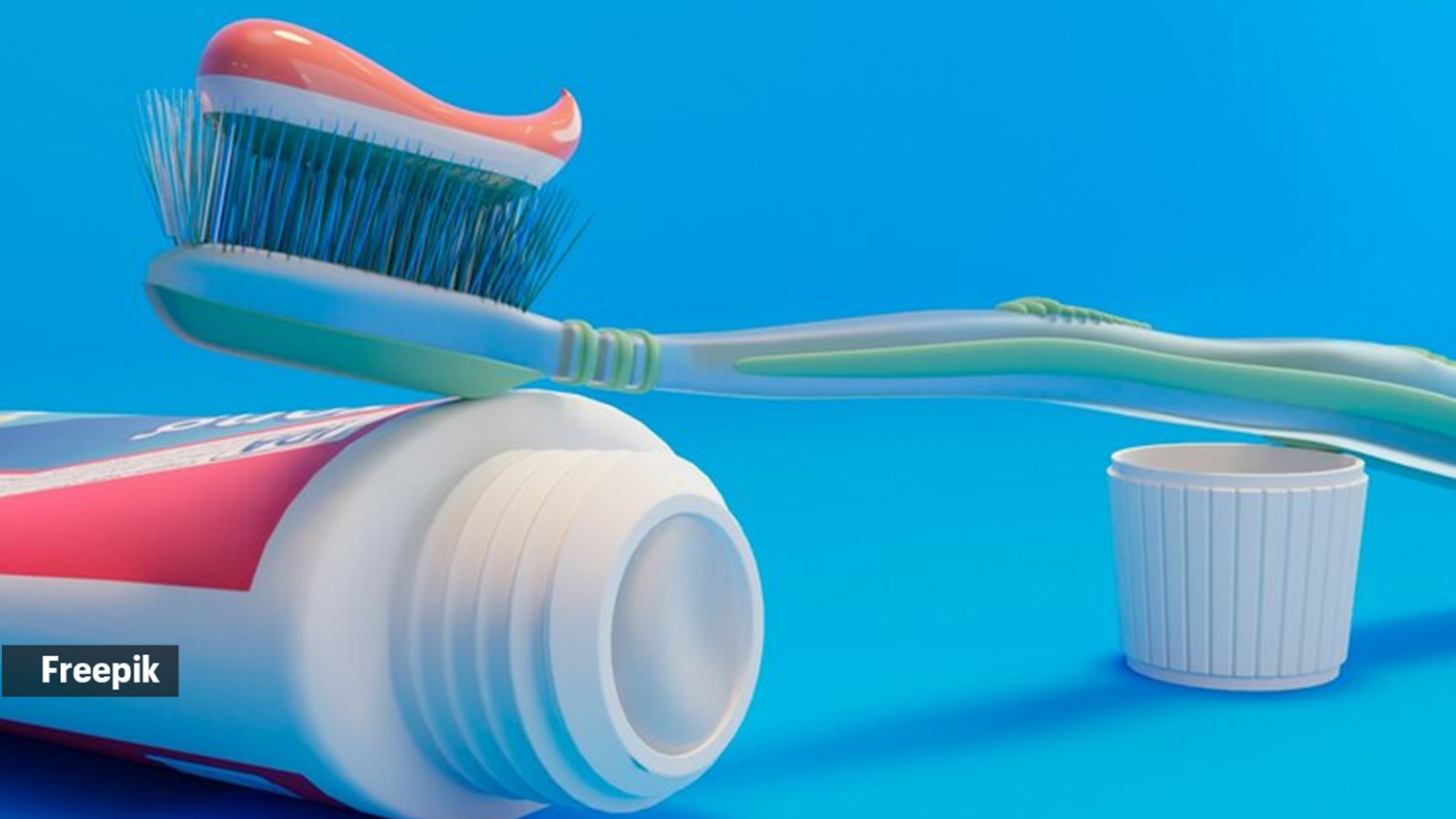📣 For more lifestyle news, click here to join our WhatsApp Channel and also follow us on Instagram
What does the colour code on your toothpaste actually mean? Dentists reveal the truth
The most common colours you'll find on a tube of toothpaste are red, green, blue and black, but they could come in any shade.
 The most common colours you'll find on the back of a toothpaste tube are red, green, blue, and black. But these dots can come in any shade. (Source: Freepik)
The most common colours you'll find on the back of a toothpaste tube are red, green, blue, and black. But these dots can come in any shade. (Source: Freepik)Long gone are the days of asking, “Kya aapke toothpaste mein namak hai?” Social media is abuzz with posts claiming that the colour codes on toothpaste barrels indicate how healthy and safe the product is.
Toothpaste companies do take note of such posts. A blog post on Colgate’s website, dismissing such claims as “hoax”, said, “According to the posts, green marks mean the toothpaste is made from only natural ingredients, blue marks mean it contains a mix of natural ingredients and medication, red marks means it contains both natural ingredients and chemical ingredients, and black marks means it contains only chemical ingredients,” and “As much as we love cracking secret codes, this one actually has nothing to crack because it’s entirely untrue. These markings have nothing to do with the ingredients in your toothpaste.”
What is the colour code for, then?
Indianexpress.com consulted experts to uncover the rationale behind these colour codes.
Do you have anything to worry about?
“Colour codes are often used in manufacturing and packaging industries as cues for colour sensors to indicate where the tube is to be sealed. Information about the contents can always be sought by reading the ingredients mentioned on the toothpaste tube or the pack containing it,” shared Dr P Parthasarathi Reddy, cosmetic dentist and founder of FMS Dental Hospitals.
 The sensors in a manufacturing unit follow chromatology, or the science of colours, to pick up on the placement of the crimp in the tube. (Source: Freepik)
The sensors in a manufacturing unit follow chromatology, or the science of colours, to pick up on the placement of the crimp in the tube. (Source: Freepik)
“The most common colours you’ll find on the back of a toothpaste tube are red, green, blue, and black. But these dots can come in any shade. They have no connection with the ingredients of the paste and do not indicate whether the product is natural or made of chemicals,” said Dr. Kamlesh Kothari, dental implant specialist, cosmetic dentist and maxillofacial surgeon in Kolkata.
He explained that in a factory, these tubes are manufactured in an assembly line, with millions produced daily. “The sensors in a manufacturing unit follow chromatology, or the science of colours, to pick up on the placement of the crimp in the tube.”
There is nothing to worry about when it comes to these colour codes. Kothari suggested using whichever tube you prefer, and if you want more clarity on the subject, check the label or ingredient list and consult a dentist.
📣 For more lifestyle news, click here to join our WhatsApp Channel and also follow us on Instagram
- 01
- 02
- 03
- 04
- 05



























